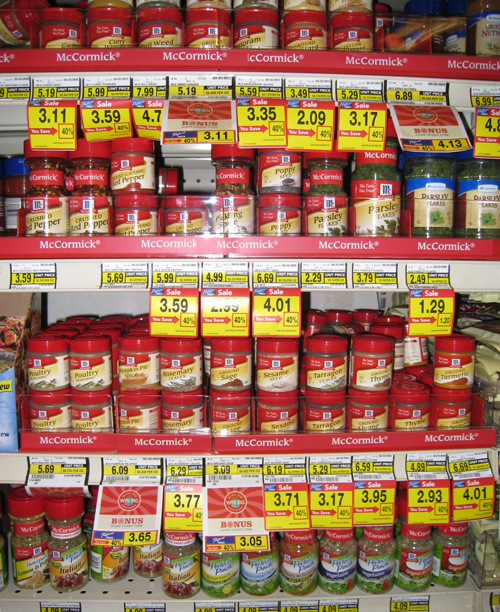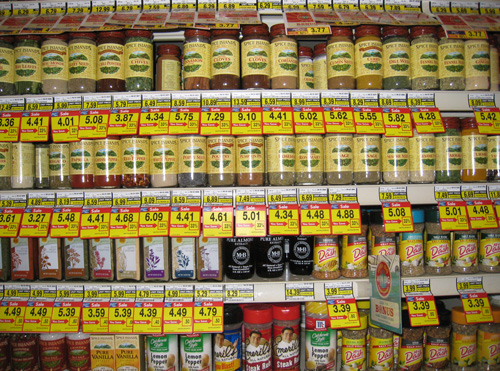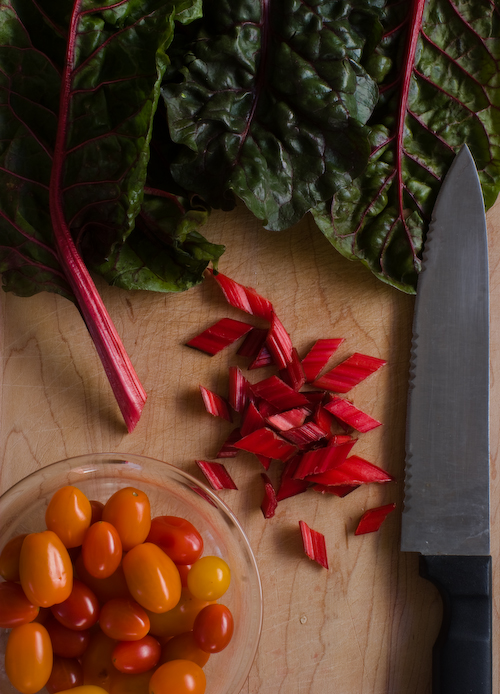Classic Cheese Sauce
A Miner's Daughter

Can I tell a story about my Mom? Mom was born in the small mining town of Eureka. Eureka was a good name for a mining town, but it’s pretty much a ghost town now. Her daddy was a hard rock miner who left school—he had been a promising student—at the age of sixteen to go down into the mines. He did this because his father, who had also been a miner, died and it fell on him to support the family. Hard rock mining wasn’t healthy and in Eureka they mined lead. As a result my Mom’s dad lived a short life—he died of pneumonia at the age of 32, having spent half his life in the darkness of the mines. His name was Leland Whitehead and I carry his name—my middle name is Leland.
My Mom was just two when her daddy died. Her mom did the best she could to support the family but times were hard and life was a struggle. I think that struggle made Mom a strong woman because she’s in her 90s now, cooking, driving, and managing quite well, thank you. Like her dad, Mom did well in school. She skipped two grades, won the high school spelling bee as a 13-year old sophomore, and was runner-up in the county contest. But she followed the pattern of her dad, going to work at the age of 16 to support the family. She would have done well in college, but higher education just didn’t seem a possibility for a poor Depression kid.
Thinking about this week’s subject, the difficulty of finding healthy milk, brought to mind a story from Mom’s childhood. There was an Aunt Kate who looked after Mom and her family. Aunt Kate was like a second mom; they might not have survived the Depression without her. The only problem, Mom later reminisced, was that when she did something wrong, she heard about it twice—first from her Mom, and then from Aunt Kate.
Fortunately for them, Aunt Kate had a milk cow that grazed in an unused pasture behind their home. So despite their poverty, they had the luxury of whole milk from pasture-fed cows—not pasteurized, not homogenized, not even reduced fat. Mom has a wonderful memory of cream rising in pans of milk in the icebox (this was before refrigerators). They would take a slice of homemade bread and lay it on the cream until it was well coated. Then they would sprinkle some sugar on it for a delicious snack.
But this was a critical inflection point, a rising and a falling, in the American dietary: Sugar, once a luxury, had become so cheap even the poorest could afford it. And real milk, available to ordinary folks for millennia, was about to disappear from most people’s pantry. I wish I had a picture of Mom eating her sugary creamy bread to mark this historic turning point.
Animal Protein Limit
What goes for milk also goes for dairy: We’re learning how to buy healthier butter and cheese, but, like meat, we eat dairy products sparingly. Our goal is to limit animal products to 1/3 of our protein intake, with the other 2/3 coming from plant sources. We’ll return to this idea—a big change from the MAD—that we first talked about in the post, Protein 101.
In the post cited above—to meet our 1/3 animal protein target—we set a cheese limit of 4 oz. weekly. (The beautiful wife gets more because she drinks so little milk.) This caused us to rethink our use of cheese, which led to a new idea: Though we like cheese as a snack, the best use of our cheese ration is to make vegetables more enjoyable. The tastiest way to do this is with a cheese sauce—the recipe for this week.

Cheese Sauce Recipe
Leah D. Widtsoe, a formidable woman of the last century and coauthor of the 1937 book The Word of Wisdom: A Modern Interpretation, was a great proponent of whole grains. But she found one use for refined flour—making sauces. I usually use whole grains in cooking but in developing my sauce recipe I tried four versions:
- Sauce made with refined flour, butter, and milk (called béchamel by the French).
- Repeat #1 but with minced onion added.
- Sauce made with whole wheat.
- Sauce made with refined flour and homemade chicken stock (called veloute).
I found that the quickest way to thicken sauce is to use refined flour; whole wheat flour thickens very slowly. The beautiful wife also thought refined flour sauce tasted best, with or without onion. “You could have added garlic,” she suggested. In fact we found that all the flavors typically added to white sauce—nutmeg, powdered mustard, red pepper flakes, onion, and garlic—add interest if your palate wants a change. But a simple sauce flavored with just salt and white pepper tastes really good. We resolved to save the extra flavors for later, when we craved a new taste experience.
When I saw how much easier it was to make white sauce, or béchamel, with refined flour, I made the mental connection between its introduction and the rise of those rich sauces that characterize French cuisine. French chefs are said to have a rule about sauce: A good sauce can be eaten alone. It’s true—our sauces were delicious.

Mornay Sauce
For cheese sauce, you simply make a white sauce and stir in your favorite cheese, grated. With a little practice you can prepare cheese sauce in under 10 minutes. The French call it mornay sauce. Ladle your cheese sauce over steamed Brussels sprouts, cauliflower, or almost any vegetable to improve the taste. Or you can coat a mix of vegetables with the sauce and bake them in a casserole.
We did this with a mixture of eggplant, yellow squash, onion, and tomato by first steaming the vegetables, then baking 20 minutes in a casserole au gratin. I made the breadcrumb crust by mixing a cup of buttered toast crumbs with ½ cup grated Parmesan Reggiano cheese. It's shown in the picture above with a kale salad. This meal was delicious, totally healthy—we agreed it was good enough for our fancy friends.
We made our cheese sauce using Tillamook cheddar. (Ratio: The usual mixture is ¼ cup of cheese to a cup of sauce, but you may want more if the cheese has a subtle flavor or you want to thicken the sauce.) If you’re feeling fancy try a mixture of Swiss Gruyere and Parmesan Reggiano.
If you’re an experienced cook, you don’t need lessons on making mornay. But a lot of people who want to eat better aren’t trained cooks, so it seemed important to include a cheese sauce in this year's 52 Breakthrough Recipe list. Here's our recipe:
Ingredients:
- 3 T butter
- 3 rounded T flour
- 2 C whole milk
- ½ tsp salt (but consider the saltiness of the cheese)
- White pepper to taste
- ½ C cheddar cheese, grated
Directions:
- Heat, but don’t boil, the milk in a medium saucepan.
- While milk is heating, melt the butter in a small saucepan at medium heat. When foaming subsides, stir in flour using a wooden spoon. Let it cook about 1 minute until the paste turns a tan color and a nice aroma develops. (The time depends on the temperature of the pan.) If adding onion or garlic, this is a good time. Chefs frown on onion salt or garlic salt; use the real thing. Add garlic at the end as overcooking can turn it bitter.
- Add the heated milk, stirring with a whisk. Add the salt and white pepper and any flavor favorites. Cook about five minutes, whisking frequently, until sauce thickens.
- Returning to the wooden spoon and lowering the heat, stir in the grated cheese until it’s almost melted and then remove pan from the heat. Overcooking can make the cheese stringy and tough.
This is a classic cheese sauce. I really didn’t introduce anything novel so I can’t append my name to it. That’s a shame; we’ll just call it Classic Cheese Sauce.
 Friday, June 1, 2012 at 11:13AM | by
Friday, June 1, 2012 at 11:13AM | by  Skip Hellewell |
Skip Hellewell |  6 Comments |
6 Comments |  1 Reference | | in
1 Reference | | in  cooking,
cooking,  dairy,
dairy,  recipe |
recipe |  Email Article
Email Article 















